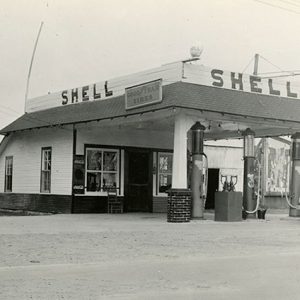calsfoundation@cals.org
U.S. Highway 63
U.S. Highway 63 enters Arkansas at Junction City (Union County) and leaves Arkansas at Mammoth Spring (Fulton County). Between these two cities, it also serves Pine Bluff (Jefferson County), West Memphis (Crittenden County), and Jonesboro (Craighead County). Much of the highway is part of the interstate system, including sections of I-530, I-40, I-55, and I-555.
Route
U.S. Highway 63 extends from Ruston, Louisiana, to Benoit, Wisconsin, a path of 1,286 miles. In Arkansas, it travels through fourteen counties, covering a little more than 400 miles.
The highway enters Arkansas in Junction City, a municipality that exists in both Arkansas and Louisiana, making it the southernmost community in Arkansas. The four-lane highway runs concurrently with U.S. Highway 167 from its origin at Interstate 20 in Ruston, Louisiana, to El Dorado (Union County). At Main Street in El Dorado, it leaves U.S. 167, traveling east as a four-lane highway to Moro Bay State Park in Bradley County. For much of this distance, it is known as the Moro Bay Highway. From the state park, where the highway crosses the Ouachita River, it angles northeast to Hermitage (Bradley County). Crossing the city, it continues sometimes north and sometimes northeast to Warren (Bradley County). In Warren, the highway intersects with State Highway 8, angling east through the northern part of the city until it reaches Myrtle Street, which it joins, heading to the north again. It continues north through eastern Cleveland County, passing through the unincorporated communities of Rye, Pansy, Rowell, Calmer, Friendship, and Randall.
The highway next enters Jefferson County, passing through Pinebergen before arriving at Pine Bluff. The older route of the highway becomes Business 63 (Olive Street), while the main highway joins Interstate 530 through the city. In the north end of the city, it re-joins Business 63 (now called the Martha Mitchell Expressway) and also joins U.S. Highway 79, crossing the Arkansas River and proceeding toward Altheimer (Jefferson County). The combined highways travel northeast, encountering Wabbaseka (Jefferson County) and Humphrey (Jefferson and Arkansas counties). In Stuttgart (Arkansas County), Highway 63 leaves Highway 79, instead heading north conjoined with U.S. Highway 165. Near Hazen (Prairie County) the two highways share a brief stretch of pavement with U.S. Highway 70 before angling north again toward Interstate 40.
Highway 63 remains with the interstate to West Memphis, passing through Brinkley (Monroe County), Wheatley (St. Francis County), and Forrest City (St. Francis County). In West Memphis, Highway 63 joins with Interstate 55, remaining with the interstate until the city of Turrell (Crittenden County). From there, the highway travels northwest to Jonesboro, also designated Interstate 555. On its way, the highway encounters Tyronza (Poinsett County), Marked Tree (Poinsett County), Trumann (Poinsett County), and Bay (Craighead County). The interstate ends at State Highway 91 in western Jonesboro, and Highway 63 continues northwest through Bono (Craighead County) and Sedgwick (Lawrence County). In Hoxie (Lawrence County), Highway 63 intersects with U.S. Highway 67, with which it once shared a few miles of pavement until the expansion of Highway 67 was completed in 2016.
Leaving Hoxie, Highway 63 joins with U.S. Highway 412, proceeding northwest through Portia (Lawrence County), Black Rock (Lawrence County), and Imboden (Lawrence County). In Imboden, the highway encounters U.S. Highway 62, and the trio of highways continues together to Hardy (Sharp County), visiting Ravenden (Lawrence County) and Ozark Acres (Sharp County) along the way, but missing Williford (Sharp County) by about two miles.
In Hardy, Highway 63 parts company with Highways 62 and 412. Winding north through the hills of the Ozark Mountains, the highway eventually reaches Mammoth Spring (Fulton County), where it travels along the edge of Mammoth Spring State Park—the eponymous spring can be seen from the highway—and then crosses the state line on its way to Thayer, Missouri.
History
The Good Roads League of the State of Arkansas was founded in Little Rock (Pulaski County) in 1896. During the early years of the twentieth century, it succeeded in funding highways in the Ozark Mountains of northern Arkansas, some parts of which would become U.S. Highway 63. This roadbuilding project became known as the Ozark Trail. The highway’s earliest designation was A-7. The Arkansas Highway Commission, formed in 1913, took over supervision of highway construction and maintenance. The federal government then became involved in roadwork in 1922, designating highways such as Highway 63 to connect the towns and cities of the nation for automobile traffic.
Portions of the highway were damaged by the Flood of 1927, requiring the rebuilding of bridges. Three bridges and a segment of the highway near Tyronza and Marked Tree, constructed in the 1920s, were added to the National Register of Historic Places in 2009. The highway and three of the bridges are dated to 1922, while the fourth bridge was built around 1928 to replace a bridge washed away by the flood.
Works Progress Administration (WPA) crews improved segments of highways all over the state in the 1930s. Implementation of the interstate system, beginning in the mid-1950s, created new portions of the highway, particularly along Interstates 40 and 55. Some segments of the highway were improved during the 1960s and later, generally replacing two-lane roads with four-lane thoroughfares. Interstate 555, leading to Jonesboro was dedicated in 2016.
For additional information:
“Highway A-7 Bridges Historic District.” National Register of Historic Places registration form. On file at Arkansas Historic Preservation Program, Little Rock, Arkansas. Online at http://www.arkansaspreservation.com/National-Register-Listings/PDF/PO0198.nr.pdf (accessed November 17, 2017).
“Highway A-7, Tyronza Segment.” National Register of Historic Places registration form. On file at Arkansas Historic Preservation Program, Little Rock, Arkansas. Online at http://www.arkansaspreservation.com/National-Register-Listings/PDF/PO0076.nr.pdf (accessed November 17, 2017).
Historical Review, Volume Two: Arkansas State Highway Commission and Arkansas State Highway and Transportation Department, 1913–2003. Little Rock: Arkansas State Highway and Transportation Department, 2004.
Steven Teske
Butler Center for Arkansas Studies
 Historic Preservation
Historic Preservation Roads and Highways
Roads and Highways Transportation
Transportation C. J. Perry Filling Station
C. J. Perry Filling Station 




Comments
No comments on this entry yet.